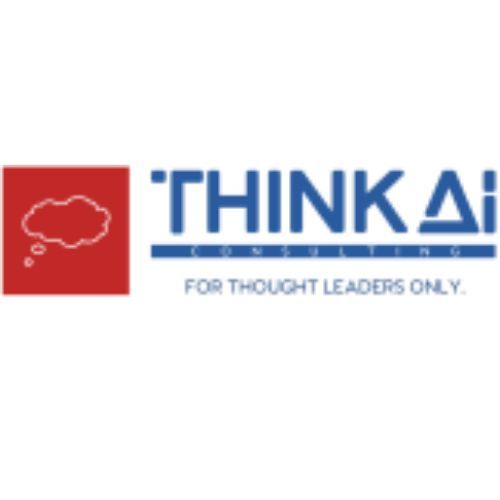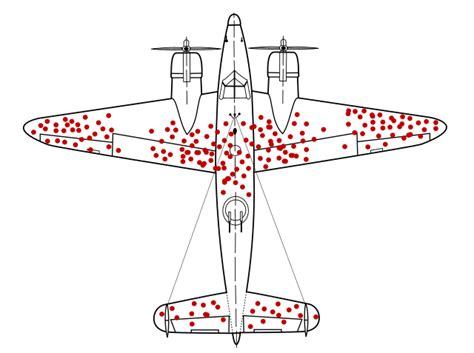#Patient Data
Explore tagged Tumblr posts
Text
Efficient healthcare documentation is becoming a priority as the industry adapts to modern technology. The demand for precise and timely healthcare records is growing, ensuring secure and accessible systems is a game changer. Virtual support in Massachusetts is leading the charge in helping facilities maintain smooth workflows while safeguarding patient data.
0 notes
Text
Learn how dental software enhances compliance, streamlines operations, and protects patient data in today’s digital landscape.
0 notes
Text

Ray Business Technologies leverages Azure Cloud to revolutionize healthcare innovation with secure, scalable, and compliant solutions. Our cloud-powered services enhance data management, improve patient care, and ensure regulatory compliance, transforming healthcare for the better. Explore how our Azure Cloud expertise can help your healthcare organization thrive in the digital era. For more information: https://raybiztech.com/solutions/cloud-services #HealthTech #PatientData #cloud #AzureCloud
0 notes
Text
Why Patient Surveys Are Crucial for Effective Healthcare Research
Introduction
In today’s rapidly evolving healthcare landscape, understanding patient experiences and expectations is more critical than ever. Patient surveys have emerged as a pivotal tool as the healthcare industry strives to improve patient outcomes, enhance service quality, and optimize operational efficiency. This detailed blog explores the importance of patient surveys in healthcare research, shedding light on how they contribute to better patient care and the overall effectiveness of healthcare systems.
1. The Role of Patient Surveys in Healthcare Research
Patient surveys are structured tools used to collect patient feedback about their experiences with healthcare services. These surveys can cover various aspects of care, including the quality of service, communication with healthcare providers, accessibility of services, and overall satisfaction.
1.1. Enhancing Patient Experience
One of the primary goals of patient surveys is to enhance the patient experience. By gathering detailed feedback, healthcare providers can identify areas where they excel and where there is room for improvement. This feedback helps in tailoring services to meet patient needs more effectively.
1.2. Identifying Gaps in Care
Patient surveys can highlight gaps in care that may not be apparent through traditional metrics. For instance, surveys might reveal issues related to wait times, staff behavior, or the adequacy of information provided to patients. Identifying these gaps allows healthcare organizations to address specific issues that might affect patient satisfaction and care quality.
2. Improving Healthcare Quality and Safety
Quality and safety are paramount in healthcare. Patient surveys play a crucial role in assessing these aspects and driving improvements.
2.1. Measuring Quality of Care
Patient surveys provide insights into various quality metrics, such as the effectiveness of treatment, the professionalism of healthcare staff, and the cleanliness of facilities. By analyzing survey results, healthcare organizations can benchmark their performance against industry standards and implement strategies to improve care quality.
2.2. Enhancing Safety Protocols
Feedback from patient surveys can also help identify safety concerns. For example, patients may report issues related to medication errors, miscommunication, or inadequate follow-up care. Addressing these concerns is vital for preventing potential safety incidents and ensuring a safe healthcare environment.
3. Supporting Evidence-Based Decision Making
Incorporating patient feedback into decision-making processes is essential for evidence-based healthcare.
3.1. Data-Driven Insights
Patient surveys provide valuable data that can be analyzed to uncover trends and patterns. This data helps healthcare organizations make informed decisions about service improvements, resource allocation, and strategic planning.
3.2. Enhancing Care Delivery
By understanding patient preferences and experiences, healthcare providers can design and implement interventions that are more aligned with patient needs. For instance, if surveys reveal that patients prefer telemedicine options, healthcare organizations can invest in and promote these services.
4. Driving Patient-Centered Care
Patient-centered care is a philosophy that emphasizes the importance of considering patients’ perspectives in all aspects of healthcare delivery. Patient surveys are integral to this approach.
4.1. Aligning Services with Patient Needs
Patient surveys help healthcare providers understand what matters most to patients. This information allows organizations to align their services with patient needs and preferences, ensuring that care is more personalized and relevant.
4.2. Empowering Patients
Surveys give patients a voice in their care journey. By participating in surveys, patients can express their concerns, suggest improvements, and provide feedback on their experiences. This empowerment fosters a more collaborative relationship between patients and healthcare providers.
5. Measuring Patient Satisfaction
Patient satisfaction is a critical component of healthcare quality. Patient surveys offer a direct way to measure satisfaction levels and identify factors that influence patients’ perceptions of their care.
5.1. Tracking Satisfaction Trends
Regular surveys allow healthcare organizations to track satisfaction trends over time. This longitudinal data helps in assessing the impact of changes or interventions on patient satisfaction.
5.2. Addressing Dissatisfaction
When surveys reveal areas of dissatisfaction, healthcare providers can take targeted actions to address these issues. This proactive approach helps in improving overall patient satisfaction and reducing negative experiences.
6. Enhancing Operational Efficiency
Operational efficiency is crucial for the smooth functioning of healthcare facilities. Patient surveys can provide insights that lead to more efficient operations.
6.1. Streamlining Processes
Survey feedback can reveal inefficiencies in processes such as appointment scheduling, patient flow, or billing. By identifying and addressing these inefficiencies, healthcare organizations can streamline their operations and reduce costs.
6.2. Training and Development
Patient surveys often highlight areas where staff performance may need improvement. This feedback can inform targeted training and development programs, ensuring that staff are equipped to deliver high-quality care.
7. Compliance and Accreditation
Patient surveys are often used to meet compliance requirements and achieve accreditation.
7.1. Meeting Regulatory Requirements
Many healthcare regulations and accreditation bodies require organizations to conduct patient satisfaction surveys. Compliance with these requirements is essential for maintaining accreditation and demonstrating a commitment to quality care.
7.2. Demonstrating Quality
Accreditation bodies use patient feedback as a key indicator of quality. High patient satisfaction scores can enhance an organization’s reputation and increase its appeal to potential patients.
8. Implementing Effective Patient Surveys
To maximize the benefits of patient surveys, healthcare organizations must design and implement them effectively.
8.1. Designing Effective Surveys
Surveys should be well-designed to capture relevant and actionable information. Questions should be clear, concise, and focused on key aspects of care. Additionally, the survey should be easy to complete to encourage high response rates.
8.2. Analyzing and Acting on Feedback
Collecting feedback is only the first step. Analyzing survey results and taking actionable steps based on the findings are crucial for realizing the benefits of patient surveys. Regularly reviewing feedback and making necessary improvements ensures that the organization remains responsive to patient needs.
9. Case Studies and Success Stories
Examining case studies and success stories can provide valuable insights into the impact of patient surveys.
9.1. Case Study: Improving Patient Care
One notable example is a hospital that used patient surveys to identify issues with post-operative care. By addressing the feedback, the hospital significantly improved patient satisfaction and reduced readmission rates.
9.2. Success Story: Enhancing Service Delivery
Another example involves a healthcare clinic that implemented changes based on patient feedback about wait times. The clinic’s efforts led to a noticeable increase in patient satisfaction and operational efficiency.
10. Future Trends in Patient Surveys
The future of patient surveys is likely to be shaped by technological advancements and evolving patient expectations.
10.1. Digital Surveys
The use of digital platforms for patient surveys is increasing. These platforms offer convenience, real-time data collection, and advanced analytics capabilities.
10.2. Integration with Electronic Health Records (EHR)
Integrating survey data with EHR systems can provide a more comprehensive view of patient experiences and outcomes, enabling more targeted and effective improvements.
Conclusion
Patient surveys are a cornerstone of effective healthcare research and quality improvement. By providing valuable insights into patient experiences, expectations, and satisfaction, these surveys play a crucial role in enhancing care quality, supporting evidence-based decision-making, and driving patient-centered care. As healthcare organizations continue to evolve, patient surveys will remain an essential tool for achieving excellence in patient care and operational efficiency.
For healthcare providers looking to leverage patient surveys effectively, partnering with a leading market research company like Philomath Research can provide the expertise and tools needed to harness the full potential of patient feedback. By prioritizing patient surveys, healthcare organizations can make informed decisions, enhance patient experiences, and achieve better health outcomes.
FAQs
1. What are patient surveys?
Patient surveys are structured tools used to collect feedback from patients about their experiences with healthcare services. They cover various aspects of care, including service quality, communication with healthcare providers, and overall satisfaction.
2. Why are patient surveys important in healthcare research?
Patient surveys are essential in healthcare research because they provide valuable insights into patient experiences and satisfaction. They help identify areas for improvement, measure the quality and safety of care, and support evidence-based decision-making.
3. How do patient surveys enhance the patient experience?
Patient surveys enhance the patient experience by gathering feedback on various aspects of care. This feedback allows healthcare providers to identify strengths and areas for improvement, leading to more tailored and effective services that better meet patient needs.
4. What role do patient surveys play in improving healthcare quality and safety?
Patient surveys help measure various quality metrics and identify safety concerns. By analyzing survey results, healthcare organizations can address gaps in care, improve safety protocols, and enhance overall care quality.
5. How do patient surveys support evidence-based decision-making?
Patient surveys provide data that can be analyzed to uncover trends and patterns. This data supports evidence-based decision-making by informing service improvements, resource allocation, and strategic planning based on patient preferences and experiences.
6. What is patient-centered care, and how do surveys contribute to it?
Patient-centered care is a healthcare approach that emphasizes understanding and addressing patients’ needs and preferences. Patient surveys contribute to this by providing feedback that helps healthcare providers align services with patient expectations and empower patients in their care journey.
7. How can patient surveys measure patient satisfaction?
Patient surveys measure satisfaction by asking patients about their experiences with different aspects of care, such as wait times, staff behavior, and treatment effectiveness. Analyzing the results helps healthcare organizations track satisfaction trends and address any issues.
8. In what ways can patient surveys enhance operational efficiency?
Patient surveys can reveal inefficiencies in processes like appointment scheduling and patient flow. Addressing these inefficiencies helps streamline operations, reduce costs, and improve overall efficiency.
9. Why are patient surveys important for compliance and accreditation?
Many regulations and accreditation bodies require healthcare organizations to conduct patient satisfaction surveys. High satisfaction scores and compliance with these requirements demonstrate a commitment to quality care and can enhance the organization’s reputation.
10. What are some best practices for designing and implementing patient surveys?
Best practices for designing and implementing patient surveys include creating clear, concise questions focused on key aspects of care, ensuring ease of completion to encourage high response rates, and analyzing feedback to take actionable steps for improvement.
#healthcare research#market research companies#patient satisfaction#patient data#patient survey#healthcare market research services
0 notes
Text
Hospital Management Software Demystified: Understanding the Basics

In the intricate world of healthcare, the efficient management of hospital operations is paramount to ensuring quality care delivery. Hospital management software serves as the backbone of modern healthcare institutions, streamlining processes, and enhancing overall efficiency. In this blog, we will delve into the fundamental aspects of hospital management software, shedding light on its key components and functionalities.
Patient Data: At the heart of any healthcare institution lies the comprehensive patient data management system facilitated by hospital management software. From admission to discharge, every interaction and medical record pertaining to a patient is meticulously documented and stored electronically. This not only ensures easy access to patient information but also facilitates seamless communication among healthcare providers.
E-Records: Gone are the days of paper-based record-keeping systems. With the advent of hospital management software, the transition to electronic health records (EHRs) has revolutionized the way patient data is managed. E-records not only minimize the risk of errors associated with manual documentation but also enable healthcare professionals to retrieve vital information swiftly, thereby enhancing the quality and efficiency of patient care.
Admin Efficiency: Efficient administration is the cornerstone of effective hospital management. Hospital management software plays a pivotal role in optimizing administrative tasks, ranging from appointment scheduling and inventory management to billing and invoicing. By automating these processes, administrative staff can allocate their time and resources more effectively, thereby improving overall productivity and service delivery.

Staff Management: Proper allocation and management of human resources are essential for the smooth functioning of any healthcare institution. Hospital management software offers robust tools for staff scheduling, task assignment, and performance tracking. By centralizing staff management processes, healthcare administrators can ensure adequate staffing levels and optimize workforce utilization, leading to improved patient outcomes and staff satisfaction.
Analytics & Reporting: In the era of data-driven decision-making, hospital management software provides invaluable insights through advanced analytics and reporting capabilities. By analyzing key performance metrics and trends, healthcare administrators can identify areas for improvement, streamline operations, and enhance the overall quality of care. Moreover, comprehensive reporting functionalities enable institutions to meet regulatory requirements and demonstrate compliance with industry standards.
In conclusion, hospital management software serves as a cornerstone of modern healthcare delivery, revolutionizing the way institutions manage patient data, streamline operations, and optimize resource utilization. By leveraging the power of hospital management software, healthcare institutions can enhance efficiency, improve patient outcomes, and stay ahead in an ever-evolving healthcare landscape.
0 notes
Text
Not to preach to the choir but I wonder if people generally realize that AI models like ChatGPT aren't, like, sifting through documented information when you ask it particular questions. If you ask it a question, it's not sifting through relevant documentation to find your answer, it is using an intensely inefficient method of guesswork that has just gone through so many repeated cycles that it usually, sometimes, can say the right thing when prompted. It is effectively a program that simulates monkeys on a typewriter at a mass scale until it finds sets of words that the user says "yes, that's right" to enough times. I feel like if it was explained in this less flattering way to investors it wouldn't be nearly as funded as it is lmao. It is objectively an extremely impressive technology given what it has managed to accomplish with such a roundabout and brain-dead method of getting there, but it's also a roundabout, brain-dead method of getting there. It is inefficient, pure and simple.
#the notes on this post are about to get sooooo annoying#this doesnt touch on the fact that AI is stealing artist's jobs which i think is the real biggest harm of AI#but like#god#just take a minute and think about how stupid the current use-cases for AI are when you consider how it gets to those conclusions#this guesswork has its place in fields where guesswork is necessary like when screening for potential health issues in the medical field#but the benefit of the medical field is that when you get a false positive you can just do further testing to confirm the initial reading#that's called a second opinion and it is how the medical field is structured fundamentally#if you screen someone for cancer and it comes out positive#but it turns out they didnt really have cancer#that's fine! that's good news and it's good that you were at least wary of it!#but so many other applications for AI do not have this leeway where incorrect answers have further reaching consequences#and more importantly AI isn't stealing the fucking jobs of doctors!!!#although jesus i really wish doctors would stop using AI to take notes for patients#yes please lets give all my personal medical info to a big machine that stores and processes literally everything it hears#im sure there would never be far reaching consequences if that machine ever had a data breach#blah
2K notes
·
View notes
Text
NHS Patient Data
Thank you for reading this short piece
The NHS is prohibited from selling patient data for commercial gain. The focus is on using patient data securely to improve healthcare. However, when it leaves the NHS, what may happen to it then? There are concerns over privacy and consent. The NHS data can be used for several legitimate purposes. These include improving services such as anonymised data used for research for better treatments,…

View On WordPress
#cohesion#data#education#fulfilment#health strategy#lifelong learning#mental health#patient data#psychiatrist#self-help
0 notes
Text
Healthcare Chatbot Revolution: Your AI Assistant for Personalized Medical Support
Embrace the future of healthcare with our advanced healthcare chatbot. Seamlessly accessing medical information, patient data, and history, this conversational AI streamlines communication between patients and healthcare professionals. From mental health support to real-time appointment scheduling, it's a revolutionary ally in navigating the complexities of healthcare services.

0 notes
Text

So. I went online and bought this Transformers generations Blurr toy and holy shit nothing prepared me for the lore on the back of it’s box o_o
Also every time Blurr gets to be a sniper my soul ascends a little bit~
+ Bonus doodles

#maccadam#transformers#blurr#tf blurr#I’m pretty sure the figure comes with one or two big ass riffles#the box has them at least#I already have two drifts now I need two Blurrs#Eventually I will get second Jazz im pretty sure ahahaha#ALSO. LISTEN. THIS. VERSION OF BLURR IS SO FUCKING COOL#Delivering super secret data and sniping his enemies???#Being all fast and chatty and also INCREDIBLY patient and focused when needed#that right here is Spec Ops material if I ever saw one#fucking. imAGINe. Decepticons have freaking Soundwave on their side. Soundwave can catch any signal and transmission and call and data#the solution#Yeah no just give the most important data to Blurr and use him like a pigeon for delivering messages#good luck hacking this Soundwave
1K notes
·
View notes
Text
what people think being a phd student is like: groundbreaking research, cute academia outfits, lively classroom discussions during teaching, inspiring conferences, writing your thesis in film-worthy libraries and cute coffee shops
what being a phd student is actually like: imposter syndrome, forgetting that you even own nice clothes because you never use them, ending up on 3-4 more daily medications than when you started, trying to make your extremely niche research topic sound impactful on funding applications and getting rejected anyway, searching through 5 different calendars for a 25-minute window where all your supervisors can be there (2 of them won't make it anyway), doing multiple other projects before actually getting to the ones your thesis is about (at least you get your name on papers, which leads us to:), the whole soul-crushing publishing process, getting your patience tested by students who don't prepare for classes at all (but expect you to summarize and explain 3-4 lectures of stuff to them in 5 minutes during a hands-on tutorial), writing your thesis and putting together an assessment committee last minute, starting to feel nausea at the word "networking", experiencing levels of burnout you didn't know existed, university bureaucracy slowly but surely draining your will to live
#and this is not even going into all the stuff that comes with doing clinical trials#and dealing with patient data#i could become a gdpr lawyer after this 💀#the burnout is really burning these days and i still have 5 months to go 😔#the last shred of my will to live is held up by knowing i will meet lovely pirate friends and see rhys in june <33333#also shoutout to my husband for keeping me alive basically. he should get a phd degree too when all this is over tbh#not to say that i haven't had nice teaching experiences or that i don't like my research. i actually do#having time for my actual research would be nice tho#thank god i'm writing my thesis as a synopsis of my published papers and not a monograph#🐭📓
73 notes
·
View notes
Text
the neurologist i shadow is so funny bc she has a valley girl accent and yet she's the smartest person in the room. this woman was casually doing case consenus ab a man w frontotemporal dementia in the highest girliest voice imaginable. i want to be her i think
#case consensus is basically where several neurologists/doctors meet to decide what the patient's case actually is#im genuinely not sure why this medical center does it this way but they write down data on paper THEN input it into the digital system#which i have qualms w bc i feel like it wastes so much time#but literally my whole role at this internship is inputting this data into the system so i should probably be grateful they do it this way#but in that one meeting everyone was all over the place so this at the ending of the meeting this woman goes#“that... was frantic.”#in the most valley girl accent known to man#and ever since ive integrated this as my response to everything#youre right. that WAS frantic#she also was like “sorry im unfocused. need lunch rly bad” at one point during the meeting#this neurologist is just like the rest of us fr
240 notes
·
View notes
Text

okay when i started rewatching house, it took me until 3x15 but i started to notice a pattern in house's wardrobe. the scene where foreman was trying to express sadness(?) at house's (fake) brain cancer they were both wearing pink.
After that I noticed that any time house was wearing pink, they were particularly vulnerable moments. Moments that he's feeling tender or open. Moments where he is being pretty earnest.
Then I started to notice that other colored shirts came up at different times. Light blue was his most neutral state, it represents logic and reason imo. Maybe a little bit of humor. There's a lightness or surface-ness to it.
Purple represents something like consequences or grief or guilt. any time there is purple someone is bearing the weight of a decision that was made, or a complex situation.
Black represents, as you can imagine, death. the darkest moments we see house in black.
The other colors aren't as prominent, but I have theories. Red is sex, power, life, excitement, ego. tan is neutrality. white is almost naive. green is rare and house never wears it. Dark blue is still logic but more solemn, more deep. its also interesting to note the times when he doesn't wear a t-shirt under his dress shirt and leaves like 3 buttons open (hubba hubba) and when he /only/ wears a t-shirt. I think his dress shirt is almost like his armor.
#theres a lot more that i could say symbollically about wardrobe#and about the fellows too.#i think its facinating that the scrubs are pink and green#and that its never clear at least to me what the difference is#i would like to pay more attention next rewatch bc i missed 2.5 whole seasons of data#also maybe i will eventually do a master post about this and like compile pics and stuff#also! this scene is really interesting and i could talk at length about it#all ill say is#This scene is particularly interesting because foreman tries to do what cameron and chase did#but gave up bc of houses needling.#house is playing the piano and recieving news that his patients brain only half works#foreman just tells him about the case#and i think to house thats actually the sweetest(?) thing he could do#hes not lying#hes helping house by giving his mind something to work on#which if he did actually have brain cancer is prob what he would want#i think this is as much love he could bear to receive#okay anyway i love foreman!!!!!!!#house md#malpractice md#eric foreman#gregory house#house
108 notes
·
View notes
Text



Data winking at Picard and scanning him w his eyes. last gif is a slowed down version so u can more easily see it
#my stuff#Data#Picard#Data Soong#Data star trek#Data tng#Jean-Luc Picard#Jean Luc Picard#Picard tng#star trek tng#sttng#st tng#datacard#im not saying i ship them bc im just so aspec and they obviously have like a kind of familial vibe but im not gonna lie this activates#something in me#particularly in combination with how Picard ended this conversation by saying Datas resourcefulness never ceases to amaze him#its a pretty mundane scene but i just think its neat yknow. marge.jpg#my gifs#star trek gifs#Data unloads so much information at once and then hes like “There's more.” and Picard is like oh?#yknow........#also im pretty sure Brent probably didnt mean to wink right. like its just. an artifact of being human sometimes i know how it is and it#would be hard to make sense of in this scene anyway but god i just think its so fun to think about#why in the world Data might be having this kind of twitch while talking to Picard#hes putting a lot of effort into this mission !! hes reporting to daddy...................................... sorry but like....... come on#like LOOK ..........what is all that.. his face is so serious hes like being so dutiful but i think hes also like happy to be helping#as always but it comes thru in this scene. in a way i dont always notice in others#the real reason it got my attention was bc of what Picard said at the end and his vibe too like he was listening so attentively and#patiently and he had this vibe of gratitude and almost a deference#tbh i imagine its bc he knows Data Follows Procedure so he doesnt feel the need to put on the Captain act so much
21 notes
·
View notes
Text
Ok, so there's this entire economy that's built on returned/overstock goods that were on shelves in America eventually ending up in Mexico right?
Random companies like Target or whatever pay X dollars to put some crap on their shelves until it's clear it's just not selling, so instead of eating the loss they sell it at basically 0 profit to some asshole with a truck and the ability to tolerate the god awful amount of paperwork moving goods across that border entail.
Ok and then that some asshole gets to the border and they go through everything they've got and decide what's worth Actually paying the import taxes on and what's basically just land filler. And they take their trash pile and they go to the trash store in whichever border town their in, and say "hey you want this crap?" and the trash store owner says "Nope! but I know some poor schmucks who'll buy it because they can't afford anything better." And they put the trash on the shelves.
These are all the returns, the opened boxes and damaged but Technically probably still functional, things it was just too expensive to try to import into Mexico bc they were worth less then it would cost in fees to get them on shelves there.
Ok, and as a child of one of these towns, you go in to these stores and you buy a basically new Video Game™ for like 2 dollars. And it's crap. Its not shovelware for a show you think you've never heard of or anything but it was still something made to put Product™ on Shelf™ and it'll be lost media in a few years because every single copy ended up in un marked cardboard boxes in towns like yours.
but it's what you had the money for and so it's what you think all games are like until you move somewhere with an actual game store and find out that wait no, theres games that don't crash constantly and have more depth than a dry river. You see the same crap games that were all over your town but no one buys them because they have better options. which is how they end up on the trash store shelves eventually.
And then a decade or some odd later you have to deal with people who've always had access to the good stuff and the word of mouth knowledge or TV commercials or magazines to tell them What was good before they bought it claiming the crap they bought and returned or never gave time in the first place just didn't exist and that shovelware is an artifact of modern game dev instead of something that was always there since the beginning.

#the fact you can download patches is fucking Bonkers. What do you Mean the game can fix itself instead of just being#trash forever?? Its a fucking miracle.#idk im just bitching about how entitled some folk sound when they have to be patient about their toys instead of buying on launch day#it used to be So much worse!! its not even making Vast amounts of plastic waste anymore!!#because you can just. Go to wherever has an open wifi connection in your town and have your game magically fix itself if you dont have#a connection at home/ dont have the data to do it through a mobile hotspot
47 notes
·
View notes
Text

#i am him and he is me#i love him#therefore i love me#which is nice#i love picard being patient with him when he takes orders seriously#and explaining more clearly#and APOLOGISING#picard will u be my dad#star trek#star trek tng#live reacting to star trek tng#live reacting to star trek#star trek the next generation#data#star trek data#data tng#autism
17 notes
·
View notes